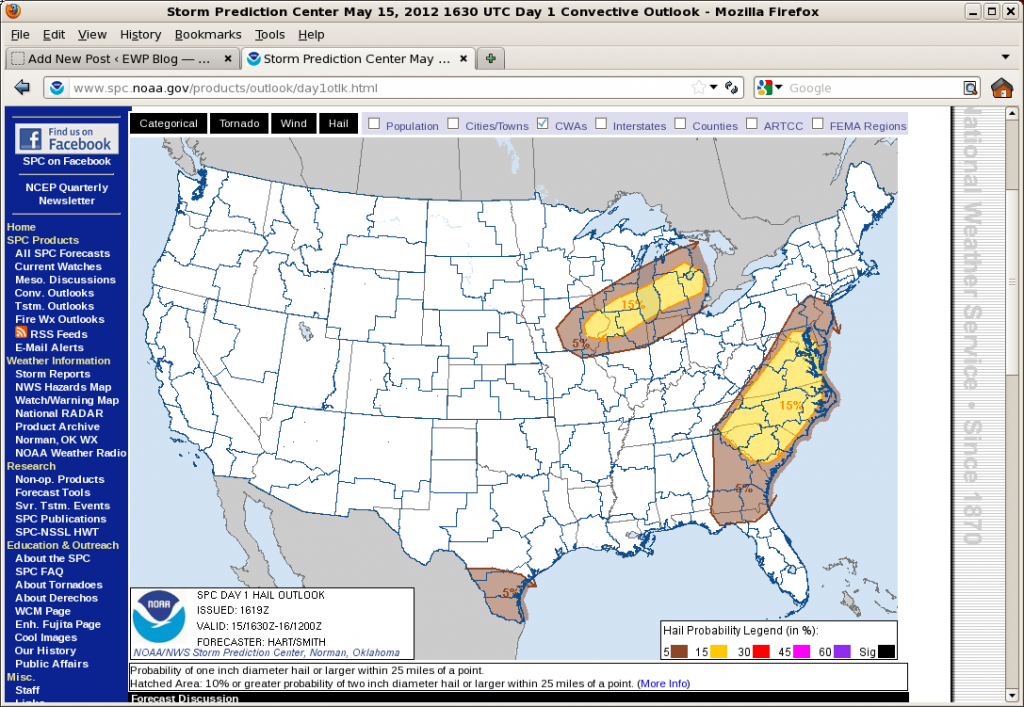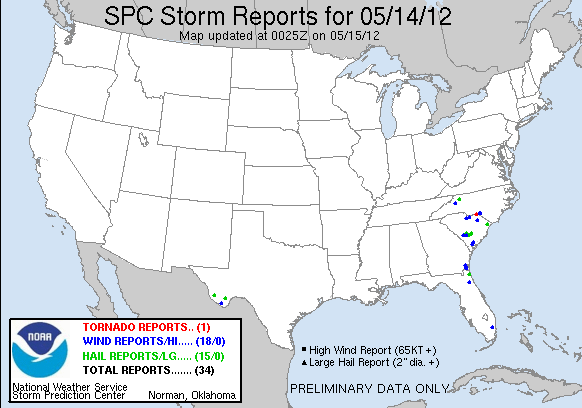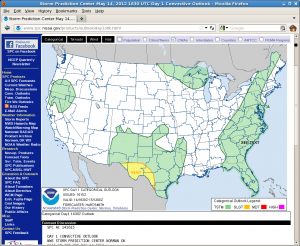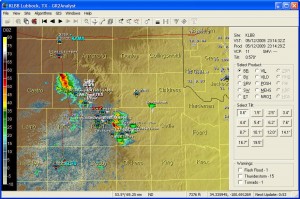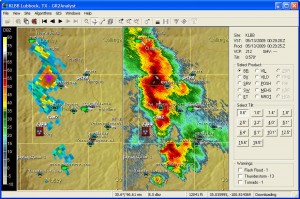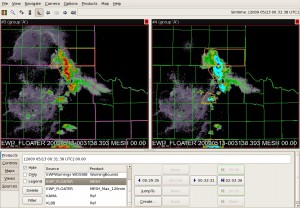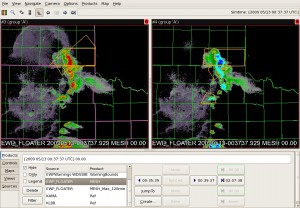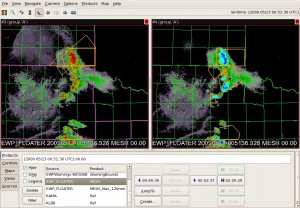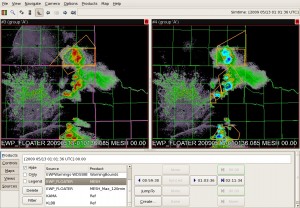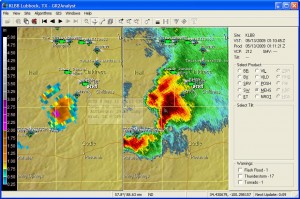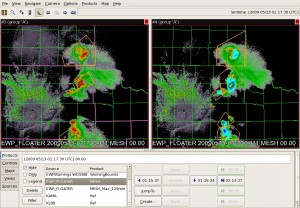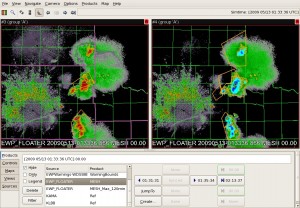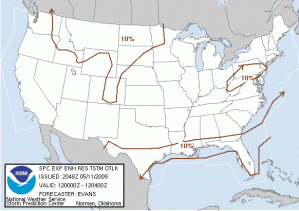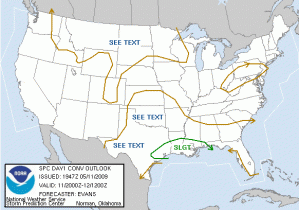LMA:
Kevin – Identify trends and signatures and their meaning could be useful. Identify what’s useful in developing a storm in initiation.
Chris – Liked the trends in Google Earth.
Steve – VLMA Still needs correlation between its display and other signatures and severe weather events. Don’t know the benefit of satellite-based sensor in areas of regular LMA sensor.
Kristen – LMAs are line of sight so they’d need to be smartly located in topography.
John- Would anticipate what it’s coverage would be in poor radar coverage areas and also for coastal areas for advance warning of LTG for mariners and beach-goers. Concurs more research needed.
What want to see? Trending, manual area defining intervention to define trending (e.g., distance speed tool or a box),
CASA:
John – anticipates usefulness of 3dvar and multi radars but also big education challenge. Would like to see vertical cross-section. Would prefer a 2 min update if they could get some vertical structure.
Steve – Would like cross-section from multi-radar including CASA. Wed night was a significant stepping stone was like Red Rock was in 1991. Would like to time-match 88D, CASA, PAR in one 4-panel.
Kevin – CASA saw the circulations 3-5 min ahead of 88D in Gracemont. Kevin walked into the WFO concerned they were seeing it. But they had the TOR drafted. WFO forecasters also walked into the HWT to view the CASA data.
Concerning RFD winds in Anadarko, CASA really showed the winds. The 3dVAR picked up on the winds as well. KTLX showed no RFD winds.
Chris – Concurs with the benefits of rapid update. Drawback is the attenuation.
CASA wishlist: Can a manual scanning override be accomplished? This is a workload strategy that could be accomplished by having someone managing scanning while the other interprets storm structure. The software would need to be made simple.
Would an attenuation product be useful? Unknown at this time.
PAR:
Kevin: Liked the mid- upper-level resolution. Midlevel mesos tightened up more quickly in PAR than 88D. Did not see any adverse effects of adaptive scanning. Perhaps would like to see a more frequent full volume scan in explosive initiation environments. Edge of sector had a bit more velocity problems.
Chris: Lot of more features visible on PAR.
Steve: Data quality was better this year’s experiment.
John: Anticipates much better detection of descending cores in low-shear event. Worth having superres even with more time.
What tradeoff are the forecasters willing to consider if one is required to see clear boundaries around the storm? They are willing to consider a tradeoff depending on how important it is to see the boundaries.
Kevin: Is CASA network refractivity conceivable? Feb 10 case refractivity could’ve explained why the following supercells weren’t tornadic. Could it compensate for sacrificing scanning frequency for sensitivity.
Chris: Wondered about the impact 2.1 deg beamwidth on edges of sectors? There was some impact but would be limited in the future with hardware upgrade.
Adam wondered about most what was the most useful scanning stategies. Not much difference…all were good. 15 elevations was sufficient.
Kevin: Changing the PRF could be made easier to do but liked the immediate feedback in the PAR.
Multi-radar:
Steve: What would be the best? Get it into AWIPS in general
Kevin: Not a pleasant thought thinking about not using the products. MESH, 30 and 50dBZ hgt > 0C and -20C, Reflectivity at 0, -20 C. Kevin doesn’t look at rotation tracks as much as others in the office. Though they use it for post-mortem.
The MESH, rotation tracks were used to track motion. Kevin noticed how big the polygons are compared to actual tracks.
Chris: MESH and reports seem to coincide. Rotation tracks showed the strongest tracks were colocated with tornadoes.
John: MESH and rotation tracks were useful to call in and verify reports.
Merging LMA with multi-radar data?
General comments:
Steve liked the jobsheets for WDSSII. Should be done on day 1.
Need better AWIPS localization to bring up map products on 4-panels without procedures.
Intro seminars – Good, no death by powerpoint by death.
AWIPS introduction was an added bonus.
Give a chance for forecasters to customize. They could bring their own procedures. Could use the ‘alter functions’ to change model type or radar ID.
International visitors could benefit from an hour or two of software spinup.
Get SVS capability.
Additional “lost” notes found in an archived draft never published until now:
LMA considerations: Don’t know what VLMA intensity to consider in warning issuance. Screen real estate issues. Would like the source points. Swears that supercell ID can be done with VLMA and 0.5 deg radar data. From an Canadian pt of view, if a radar goes out there’s no extra data. VLMA very useful to see LTG frequency going up just before meso increased north Norman. MESH would increase after the LTG would peak. VLMA would indicate splits about to occur. Might give more confidence about which updraft might be more dominant. Reflectivity may be more quick to develop but there are lot teaser cores whereas VLMA gives larger view. One minute update in VLMA really helpful to get the warning out more quickly.
PAR considerations: So much to see and tremendous detail. They spent the whole night looking at base data. Can animate cross section to see the cores going up and then making the plunge. Were able to change the PRF and see changes almost instantly. Scanning strategies were pumping data so fast that they were not finished with looking at upper tilts by the time new low tilts came in. Super res in high tilts revealed stuff not seen before.
CASA: 3dvar was very useful showing a meso in all physical dimensions. Could see the meso forming on the forward flank of the storm. WFO came in to see the CASA display of the mesocyclone wrap up. Could see vortex holes and multiple velocity couplets. Adaptive scanning was easy. Looked at individual CASA radars but composite CASA was used most often. 3dVAR does have a 10min latency so it was used as confirming evidence. Long range concern about how many people are needed to monitor a CWA full of CASA radars. How to display multiple base velocity fields? 3dvar is one way, shear and divergence products are another. Composite vs. single radar in CASA. Single radar showed much more pronounced hook but then there’s attenuation issues that composite helps overcome.
No EMs called last night concerning CASA.
Need procedures. Or better, need to load specific maps even without procedures. Everything was geared to issuing warning earlier.
Jim LaDue (EWP Weekly Coordinator, 11-15 May 2009)


